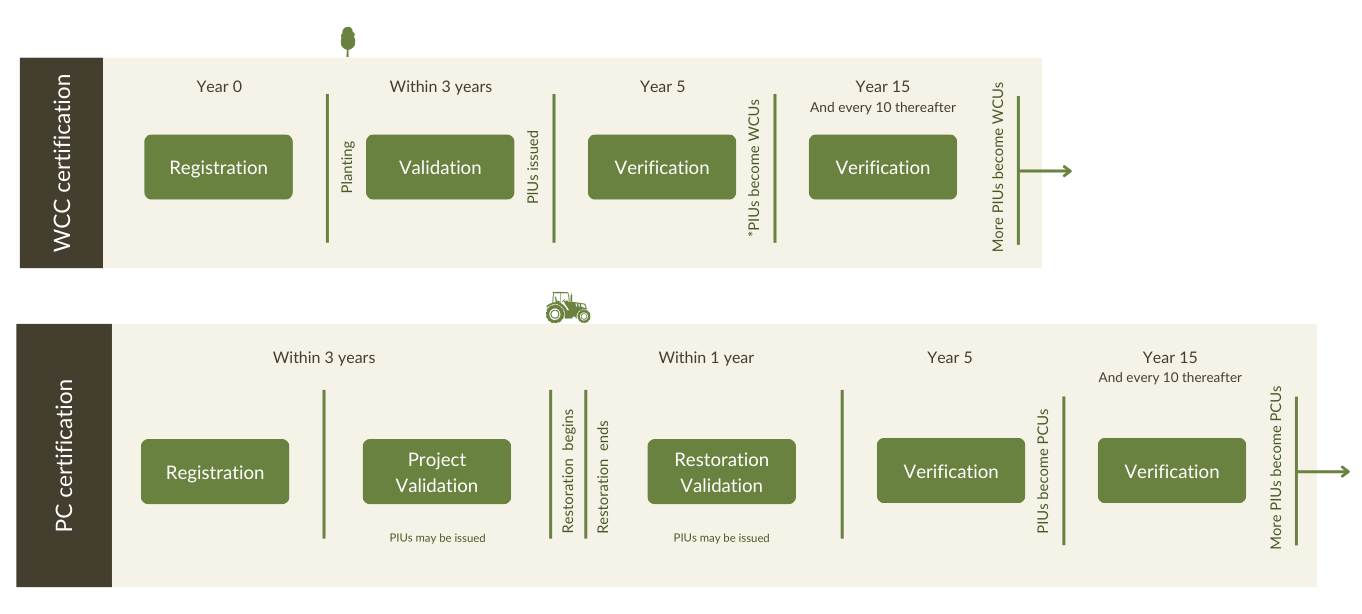Pass on the admin of project validation to us
The validation stage of the Woodland Carbon Code and Peatland Code is admin-heavy. Working with us means:
The majority of the administrative burden is taken off of your shoulders
There are Code-literate eyes on the details of your project giving you peace of mind
You could gain access to grouping which would make certification costs lower
What does validation entail?
Validation is the second of three steps in Woodland Carbon Code and Peatland Code certification – the first is project registration, which must happen before any work on the project begins. We can help you with the entire process, or with just one or two of the stages.

Woodland Carbon Code validation
Validation must happen within 3 years of project registration, but after planting is complete. It involves completing and sending a project design document to the Woodland Carbon Code, and an appointed third-party auditor – either Soil Association or Organic Farmers & Growers.
The information/documentation required for Woodland Carbon Code validation includes but is not limited to:
The Woodland Carbon Code calculator
A cashflow spreadsheet
Grant documents (where relevant)
Proof of ownership
Once a project has been validated, it triggers the issuance of the first, ex-ante carbon credits – Pending Issuance Units (PIUs), which represent ownership of future carbon savings (CO2 sequestered by the trees over the project’s lifetime, which can be anything from 30 to 100 years).
Peatland Code validation
Peatland Code validation takes place over two distinct phases; project validation and restoration validation.
Project validation is a desk-based assessment that must happen within 3 years of project registration and is generally completed before restoration work begins, though there are some situations in which this phase can be completed in tandem with restoration works.
Importantly all baseline information (i.e. A project map displaying project features and peat depths, a peat depth assessment sheet, and suitable photographic evidence) must be approved by an auditing organisation before restoration work begins. If project validation is not achieved before restoration work begins then it must be achieved before restoration work finishes.
Restoration validation involves providing updated and finalised documentation for the project to the auditing organisation after restoration work has finished and must be conducted within one year of that date. The auditing organisation will conduct a site visit to confirm the accuracy of the submitted documentation and the quality of the restoration work during this time.
The information/documentation required for both phases of Peatland Code validation include:
Peatland Code carbon calculator
Peatland Code-compliant map
Additionality sheet
Grant documents
Proof of ownership
Evidence of neighbourhood and community engagement
Project design document
Restoration management and monitoring plan
Risk assessment
Once a project has been validated, it triggers the issuance of the first, ex-ante carbon credits
– Pending Issuance Units (PIUs), which represent ownership of future carbon savings (CO2 avoided over the project’s lifetime, which can be anything from 30 to 100 years).
REACH OUT if you'd like to discuss Project Validation for a Woodland Carbon Code or Peatland Code project.
Looking to sell carbon?
We have sold over 2 million carbon credits (PIUs) on behalf of British land managers since 2006. Find out how it works and how Forest Carbon can help on our Sell Carbon page.